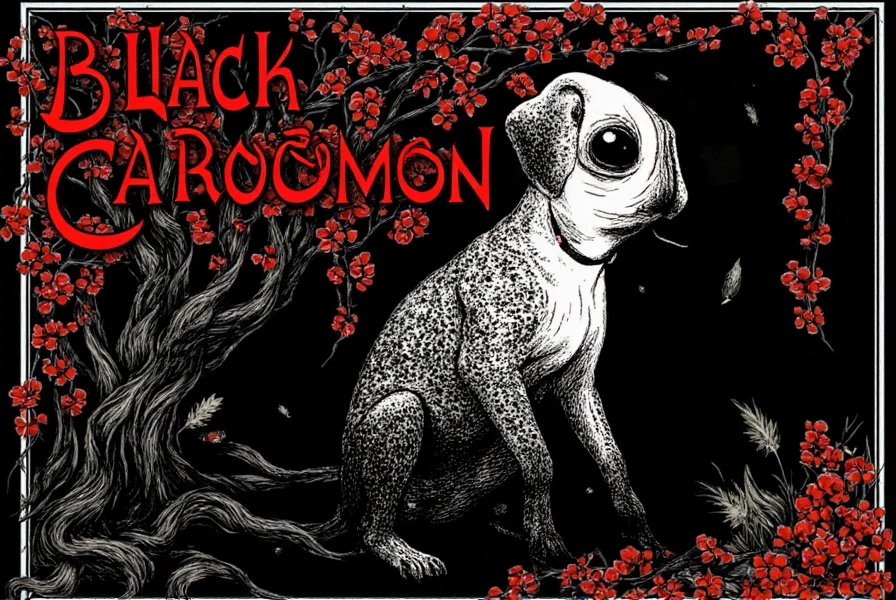Table of Contents
Introduction to Black Cardamom
"Black cardomon" is a common misspelling of "black cardamom" (Amomum subulatum), a spice from the ginger family native to the Eastern Himalayas. This article provides accurate information about true black cardamom, including its distinct smoky flavor, culinary applications, and how to distinguish it from similar spices like green cardamom or Nigella sativa (often mistakenly called "black cumin" or "kalonji").

What Is Black Cardamom?
Black cardamom (Amomum subulatum) is a large, dark brown pod from the ginger family, distinct from green cardamom (Elettaria cardamomum). It grows wild in the Eastern Himalayas and is widely used in Indian, Nepalese, and Chinese cuisines. Unlike its green counterpart, black cardamom has a strong smoky, camphor-like aroma due to traditional drying over open flames. It is not related to Nigella sativa (which is sometimes incorrectly called "black cardomon"), a small black seed from the buttercup family.

Taste and Aroma
Black cardamom has a complex flavor profile: intensely smoky, earthy, and slightly camphoraceous with hints of menthol. When crushed or toasted, it releases a deep, resinous aroma that adds warmth to savory dishes. Unlike green cardamom (which is floral and citrusy), black cardamom is robust enough to stand up to long-cooked meats and stews. Its flavor is not interchangeable with Nigella sativa (black cumin), which has a nutty, oregano-like taste.

Culinary Uses
Black cardamom is essential in many traditional dishes where a smoky depth is desired. It is commonly used in:
- Indian Curries and Biryani: Whole pods are added to garam masala and used in slow-cooked meat dishes like Rogan Josh or Biryani rice.
- Nepalese and Tibetan Stews: A key ingredient in Thukpa (noodle soup) and other hearty broths.
- Chinese Five-Spice Powder: Provides the smoky backbone of this iconic blend.
- Smoked Meat Rubs: Crushed pods enhance barbecue sauces and dry rubs for ribs or brisket.
Always remove the pods before serving, as they are too tough to eat. For maximum flavor, lightly toast whole pods in a dry pan before crushing.

Buying Guide
When purchasing black cardamom, look for these quality indicators:
Features to Look For
- Whole Pods: Always choose whole pods over ground powder to preserve freshness and flavor intensity.
- Appearance: Pods should be dark brown to black, plump, and free of cracks or mold. Avoid pods with white spots or excessive dryness.
- Aroma: Fresh pods emit a strong, smoky scent. If the aroma is faint or musty, the spice is stale.
Recommended Products
| Product | Features | Best For |
|---|---|---|
| Himalayan Black Cardamom | Organic, whole pods sourced from Nepal, certified non-GMO | Traditional curries, biryani, and stews |
| Spice Mountain Black Cardamom | Smoke-dried using traditional methods, rich in essential oils | Smoked meat rubs and braised dishes |
| Global Spice Co. Black Cardamom | Whole pods with high freshness seal, sourced from Indian Himalayas | Five-spice powder and slow-cooked recipes |

Practical Tips for Using Black Cardamom
Follow these expert tips to maximize black cardamom's flavor in your cooking:
- Toast Before Use: Dry-toast whole pods in a skillet for 1-2 minutes until fragrant, then crush lightly to release oils.
- Use Sparingly: Its flavor is potent—start with 1-2 pods per 4 servings. Overuse can make dishes bitter.
- Pair with Complementary Spices: Works well with cinnamon, cloves, and star anise in spice blends. Avoid combining with delicate herbs like basil.
- Store Properly: Keep in an airtight container away from light and moisture. Whole pods stay fresh for 1-2 years; ground powder loses potency in 3-4 months.
- Remove Before Serving: Always remove whole pods before serving, as they are too tough to eat.

Frequently Asked Questions
Is black cardamon the same as black cardamom?
Yes, "black cardamon" is a common misspelling of "black cardamom" (Amomum subulatum). The correct spelling is "cardamom," not "cardamon." This spice is entirely different from Nigella sativa (often called black cumin or kalonji), which is a small black seed from the buttercup family.
How is black cardamom different from green cardamom?
Black cardamom (Amomum subulatum) has large, dark brown pods with a smoky, camphor-like flavor, while green cardamom (Elettaria cardamomum) has small green pods with a floral, citrusy taste. They are not interchangeable in recipes—black cardamom is for savory, smoky dishes, and green cardamom is for desserts and sweet applications.
Can black cardamom be used as a substitute for black cumin?
No. Black cumin (Nigella sativa) is a completely different spice with nutty, oregano-like notes, while black cardamom has a smoky, resinous flavor. Using black cardamom in place of black cumin will drastically alter the dish's taste profile. For black cumin substitutes, use regular cumin seeds with a pinch of fennel.
Where is black cardamom commonly used in cuisine?
Black cardamom is essential in Indian, Nepalese, and Chinese cooking. It's a key component in garam masala, biryani, Rogan Josh, Thukpa soup, and Chinese five-spice powder. Its smoky depth makes it ideal for slow-cooked meats, stews, and braises, but it's rarely used in sweet dishes.
How should I store black cardamom to maintain freshness?
Store whole black cardamom pods in an airtight container away from light, heat, and moisture. Keep them in a cool, dark pantry for up to 2 years. Ground black cardamom loses potency quickly and should be used within 3-4 months. For maximum shelf life, store in the refrigerator or freezer.
Why does my black cardamom taste bitter?
Bitterness usually means you've used too much or didn't remove the pods before serving. Black cardamom is potent—start with 1-2 pods per 4 servings. Always remove whole pods before serving, as they are inedible. If using ground powder, reduce the amount by 50% compared to whole pods.
Conclusion
Black cardamom (Amomum subulatum) is a uniquely smoky spice that elevates savory dishes when used correctly. Always ensure you're purchasing true black cardamom—distinct from green cardamom or Nigella sativa—and handle it with care to avoid overpowering your dishes. With proper storage and usage, this Himalayan treasure can become a staple in your spice collection for rich, complex flavors.
Remember: The key to mastering black cardamom is understanding its smoky intensity. Start small, toast it properly, and always remove the pods before serving. Whether you're making biryani, barbecue rubs, or traditional stews, this spice adds an irreplaceable depth that transforms ordinary meals into extraordinary experiences.











 浙公网安备
33010002000092号
浙公网安备
33010002000092号 浙B2-20120091-4
浙B2-20120091-4